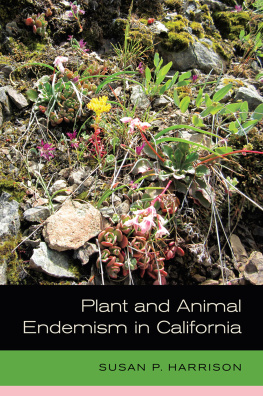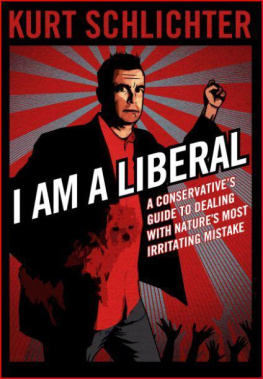Tomás Schlichter - How to Catch Clams by the Bushel!
Here you can read online Tomás Schlichter - How to Catch Clams by the Bushel! full text of the book (entire story) in english for free. Download pdf and epub, get meaning, cover and reviews about this ebook. year: 1990, publisher: Northeast Sportsmans Press, genre: Children. Description of the work, (preface) as well as reviews are available. Best literature library LitArk.com created for fans of good reading and offers a wide selection of genres:
Romance novel
Science fiction
Adventure
Detective
Science
History
Home and family
Prose
Art
Politics
Computer
Non-fiction
Religion
Business
Children
Humor
Choose a favorite category and find really read worthwhile books. Enjoy immersion in the world of imagination, feel the emotions of the characters or learn something new for yourself, make an fascinating discovery.

- Book:How to Catch Clams by the Bushel!
- Author:
- Publisher:Northeast Sportsmans Press
- Genre:
- Year:1990
- Rating:5 / 5
- Favourites:Add to favourites
- Your mark:
- 100
- 1
- 2
- 3
- 4
- 5
How to Catch Clams by the Bushel!: summary, description and annotation
We offer to read an annotation, description, summary or preface (depends on what the author of the book "How to Catch Clams by the Bushel!" wrote himself). If you haven't found the necessary information about the book — write in the comments, we will try to find it.
How to Catch Clams by the Bushel! — read online for free the complete book (whole text) full work
Below is the text of the book, divided by pages. System saving the place of the last page read, allows you to conveniently read the book "How to Catch Clams by the Bushel!" online for free, without having to search again every time where you left off. Put a bookmark, and you can go to the page where you finished reading at any time.
Font size:
Interval:
Bookmark:

Text copyright 1992 by John Eastman
Illustrations copyright 1992 by Amelia Hansen
Published by
STACKPOLE BOOKS
5067 Ritter Road
Mechanicsburg, PA 17055
www.stackpolebooks.com
All rights reserved, including the right to reproduce this book or portions thereof in any form or by any means, electronic or mechanical, including photocopying, recording, or by any information storage and retrieval system, without permission in writing from the publisher. All inquiries should be addressed to Stackpole Books, 5067 Ritter Road, Mechanicsburg, PA 17055.
Printed in the United States of America
First Edition
10 9 8 7 6
Cover design by Mark Olszewski
Library of Congress Cataloging-in-Publication Data
Eastman, John Andrews.
The book of forest and thicket: trees, shrubs, and wildflowers of eastern North America / John Andrew Eastman: illustrated by Amelia Hansen. 1st ed.
p. cm.
ISBN 0-8117-3046-8
1. Forest floraEast (U.S.) 2. Forest ecologyEast (U.S.) I. Title.
QK115.E28 1991
581.974dc20
91-28395
CIP
ISBN 978-0-8117-3046-4
To
Faythe M. Butler
and
Jack Olsen.
They made trails.
Objects are concealed from our view not so much because they are out of the course of our visual ray as because we do not bring our minds and eyes to bear on them; for there is no power to see in the eye itself, any more than in any other jelly. We do not realize how far and widely, or how near and narrowly, we are to look.
Henry D. Thoreau
If you can see, you can see with your nose and smell with your ears.
Frederick Franck
For reading the manuscript with critical eyes and providing many valuable suggestions, I especially thank ecologist Dr. Richard Brewer, professor of biology at Western Michigan University; forest pest specialist Roger Mech and state silviculturist William J. Mahalak, both of the Michigan Department of Natural Resources; and Dr. Willard M. Rose, botanist and director of the Kalamazoo Nature Center, Kalamazoo, Michigan. Final responsibility for the accuracy and interpretation of factual material remains, of course, my own.
Working with illustrator Amelia Hansen was a joy from start to finish. The privilege of engaging this talented artist as my consultant and collaborator was a stroke of luck for which I shall always be grateful.
Of vital help in collecting and photographing specimens in a variety of areas and habitats was Jacqueline Ladwein, teacher, naturalist, and cherished friend.
For my companion Susan Woolley Stoddard, who typed endless text drafts so efficiently and who has enlarged my life in so many caring ways, words failfor the fourth timeto express my gratitude.
Others who contributed in important ways to this project include Joy Andrews, Sally Atwater, Jennifer Byrne, Don Hennig, Greg Kowalewski, Janea Little, and William J. Mills.
It is one thing to recognize a plant or animal. It is another to know where to look for it, to become familiar with its ways of life, to achieve a sense of its links to other organisms and its existence as a community dweller.
Providing the name and identifying the features of a plant or animal are the concerns of field guides. Many excellent ones now exist. But as environmental awareness increases and more of us become vitally interested in the planet part of ourselves, we develop a need to reach beyond that first step. We want to know something more. We want to understand this life form not only as an individual but also as an interdependent element of its habitat.
Thats the focus of this book: to explore the details of certain organisms and their communities (including the human community) and to advance beyond the scope and intentions of the field guide.
Plants form the ultimate base of the food and energy chains upon which all organisms depend. Forest and edge plants, the subjects of this book, are the foundation of particular plant habitats. Forests may be broadly divided into woodlands composed of coniferous, deciduous, or mixed species (the terms forest and woodland are used interchangeably in this book). Or, on the basis of moisture, they can be classified as moist, mesic, or dry. Forest plants are stratified into various, rather distinct levels: tall trees, understory trees and shrubs, a ground layer of low shrubs and herbs, and the all-important subsurface flora of fungi.
Except on wooded shorelines fronting lakes or streams, a forest is almost always bounded by an edge. Edges are border zones, transition areas, between forest and open land, including openings in the forest itself. Dominant edge species consist mainly of shrubs and small trees that generally tolerate much less shade than forest plants. Edge plants are often pioneering species, characteristic of young stages in plant succession. Edges are by definition unstable. They form the front line of the forest and are major players in the process by which open land becomes forested.
The plants covered here characterize most forest and edge habitats of northeastern and north-central North America. Accounts focus not only on features of the plant itself but also on its existence as a community hub for other organisms and processes. Plant and animal coactionsthat is, the effects of one species upon anotherrange through parasitic, commensal, competitive, and mutualistic relationships. Most often the interactions are not rigidly exclusive to the organisms involved, yet some species have evolved highly specific coactions. Examples from all parts of this continuum abound in this book.
Such host-specific organisms as leaf-spot fungi, powdery mildews, aphids, and scale insects are almost universally present on plants. Thus, except in cases where these organisms are especially conspicuous or important, they are generally omitted in the separate accounts. Many other common associates, such as lichens, mosses, and many kinds of fungi, seed plants, and insects, are not host-specific or coactive to a sufficient degree to warrant inclusion. Such organisms are nevertheless important habitat residents.
Herb , shrub , and tree are general and ultimate size designations; shrubs and trees are woody, herbs are not. Technical biological terms, though kept to a minimum, are usually defined at the places they occur in the text. A short list of recurring terms appears in the glossary at the end of the book. Latin names are added only for plant and invertebrate animal species, since these are the organisms whose common or popular names most often lead to confusion. I have personally inspected all the plants as well as the large majority of other organisms mentioned. With few exceptions, the illustrations were drawn from field specimens I collected or photographed.
Thorough treatments, of course, really dont exist in science. The totality of accomplished field investigations to date into the lives and associates of many plantseven some very common onesoften amounts to very little. This book scratches at only a few of the known and more visible surfaces. Plenteous opportunity exists for individual observers to add to our understanding by the simple investment of time and notice. The aim of this book is to help one take such time and notice.
If you enjoy being outdoors, enjoy finding, watching, enlarging your own scope of vision and vision of life ... this book, my friends, is for you.
Anemone, Wood (Anemone quinquefolia). Buttercup family. Herb in moist woods and dry or mesic prairie. Its white, solitary flower and deeply divided three- or five-part leaves identify this delicate spring perennial.
Font size:
Interval:
Bookmark:
Similar books «How to Catch Clams by the Bushel!»
Look at similar books to How to Catch Clams by the Bushel!. We have selected literature similar in name and meaning in the hope of providing readers with more options to find new, interesting, not yet read works.
Discussion, reviews of the book How to Catch Clams by the Bushel! and just readers' own opinions. Leave your comments, write what you think about the work, its meaning or the main characters. Specify what exactly you liked and what you didn't like, and why you think so.









